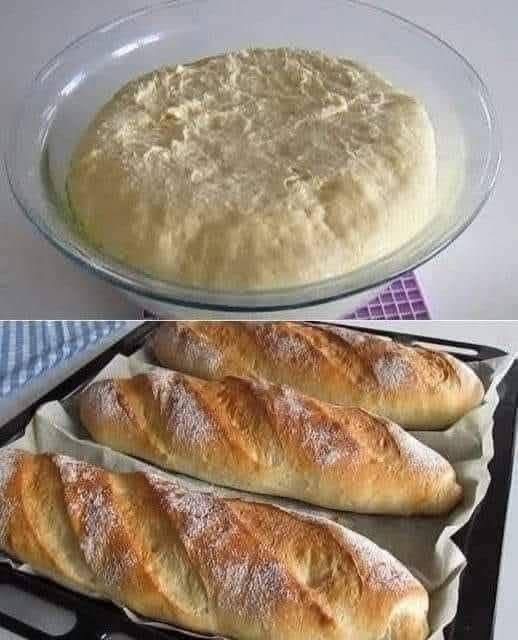Homemade Bread Recipe
Introduction
Few things in the culinary world are as comforting as the smell of freshly baked bread wafting through your home. Homemade bread is more than food — it’s tradition, nostalgia, and love kneaded into a golden loaf. This recipe is simple yet produces a soft, fluffy interior with a crisp crust, perfect for sandwiches, toast, or enjoying warm with butter.
Ingredients (For 1 Large Loaf or 2 Medium Loaves)
- 4 cups (500 g) all-purpose flour (or bread flour for chewier texture)
- 1½ cups (360 ml) warm water (110°F / 43°C)
- 2¼ teaspoons (7 g) active dry yeast (1 packet)
- 2 tablespoons sugar (or honey for natural sweetness)
- 2 tablespoons unsalted butter, melted (plus extra for brushing)
- 1½ teaspoons salt
Instructions
- Activate the Yeast
- In a large bowl, combine warm water, sugar, and yeast. Let sit for 5–10 minutes until foamy.
- Mix the Dough
- Add melted butter and salt to the yeast mixture.
- Gradually add flour, mixing until a soft dough forms.
- Knead
- Transfer dough to a floured surface and knead for 8–10 minutes until smooth and elastic.
- First Rise
- Place dough in a lightly oiled bowl, cover with a clean cloth, and let rise in a warm spot for 1–2 hours, or until doubled in size.
- Shape the Loaf
- Punch down dough to release air. Shape into a loaf and place in a greased loaf pan (or on a baking sheet for a rustic loaf).
- Second Rise
- Cover and let rise again for 30–45 minutes until puffy.
- Bake
- Preheat oven to 375°F (190°C). Bake for 25–30 minutes, or until the top is golden brown and sounds hollow when tapped.
- Cool & Serve
- Brush with melted butter for a soft crust. Let cool slightly before slicing.
Methods (Variations & Tips)
- Rustic No-Knead Bread: Use a Dutch oven and let dough ferment overnight.
- Whole Wheat Bread: Replace half the flour with whole wheat for more fiber.
- Herb & Garlic Bread: Mix in rosemary, thyme, or roasted garlic before baking.
- Sweet Breakfast Loaf: Add raisins, cinnamon, and a bit more sugar.
- Soft Dinner Rolls: Shape into small balls and bake in a round pan.
History
Bread is one of the oldest prepared foods, with origins tracing back over 12,000 years. Ancient Egyptians are credited with developing leavened bread, using natural yeast from the air. Over centuries, bread evolved into countless cultural varieties — from French baguettes to Moroccan khobz — becoming a symbol of sustenance and hospitality across the world.
Benefits
- Cost-Effective — far cheaper than store-bought artisanal bread.
- Health Control — no preservatives, customizable ingredients.
- Therapeutic — kneading dough is relaxing and rewarding.
- Family Tradition — a wonderful recipe to pass down.
Formation (How It Works)
- Yeast Activation: Yeast feeds on sugar, producing carbon dioxide that makes bread rise.
- Gluten Development: Kneading aligns gluten strands for elasticity.
- Baking Transformation: Heat causes rapid expansion, then hardens the crust while locking in softness inside.
Conclusion
Homemade bread is the perfect marriage of science and soul. Whether you enjoy it fresh out of the oven, toasted with jam, or as the base for a hearty sandwich, this recipe ensures you’ll always have a golden, delicious loaf at hand.
For the Bread Lovers
If the sound of a crackling crust and the aroma of warm yeast makes your heart skip a beat, you’ll adore this loaf. It’s the kind of bread that disappears from the counter before it’s even cooled — especially when there’s butter nearby.
